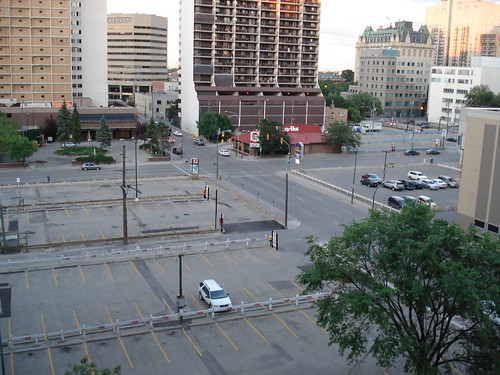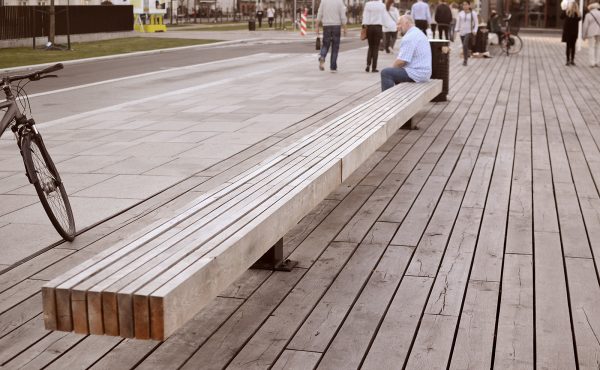

Each week we will be focusing on blogs from around the world dealing specifically with urban environments. We’ll be on the lookout for websites outside the country that approach themes related to urban experiences and issues in Toronto.
– – – – – – – – – – – – – – – – – – – – – – –
• While some Toronto business owners are protesting the loss of parking space in the downtown core, Winnipeg is suffering from an overabundance of it. Check out, City States, the University of Winnipeg’s urban studies blog for an interesting discussion of “Winnipeg’s Parking Problem”.
• The Design Observer‘s interview with Susan Harder of the Dark-Sky movement and Leni Schwendinger an artist/designer known for creating innovative lighting environments in urban spaces, is a great read about the role of light (and darkness) in urban environments. (Side Note: Schwendinger’s design company Leni Schwendinger Light Projects LTD design is behind the lighting in Toronto’s HTO park.)
• “The Garden that Climbs Stairs”, completed this summer in the Basque city of Bilbao, transforms ordinary concrete stairs into a vertiable urban park.
• The disappearance of the Thames river from the London Tube maps has residents annoyed and the mayor baffled. The ‘evaporation’ of such a quintessential navigation tool has a prompted a promise from the mayor to have it reinstated immediately (at a cost of £80,000). Apparently Toronto isn’t the only city whose new transit maps suffer from lack of quality control.
• An article published last week in the Portland Mercury, looks back at the city’s history of failed and unfinished highway projects. Author Sarah Mirk discovers that the city’s progress in becoming one of North America’s greenest cities, results not from what Portland built, but from what it didn’t.
• With populations of over 20, 000, public transit, power plants, fire stations and distinct economies some American bases in Iraq have effectivley become cities in their own right. As The New York Times explains these militarized and restricted “cities in the sand” are a world apart from the urban experience of ordinary Iraqis, as they contain “working lights, proper sanitation, clean streets and strictly observed rules and codes of conduct”.
photo by sanchom


One comment
Dear Spacing Toronto,
Thanks for picking up on the Design Observer debate. I would encourage your readers to comment on it – this issue is a touch point for many others — public lighting, energy, urban design.
For those who follow these issues – please join us on Facebook – http://www.facebook.com/pages/Leni-Schwendinger-Light-Projects-LTD/105947268629?ref=nf